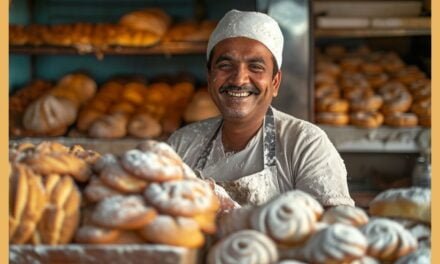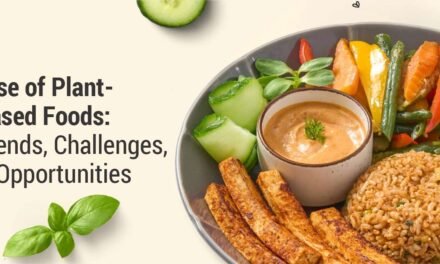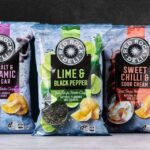Business cannot remain stagnant for a long time, it will start declining. However, growth can come if the category itself is growing. Delivering growth in processed food industry depend on the category growth rate which in turn hinges on the marketing and promotional activities of the large players including multinationals, writes Rajat K. Baisya. Therefore, small or big businesses have to constantly look for new avenues of growth, he concludes.
Table of Contents
Businesses have to grow to survive in the longer run. Business cannot remain stagnant for a long time, it will start declining and sooner or later, it will have to shut and pull down the shutter. It is, therefore, the constant endeavour for any business to look for avenues for growth. Business growth can come if the category is growing. Otherwise, growth can come by taking away competitive share which is always difficult. If however, the category is growing businesses will have to grow minimum at the category growth rate. Lower growth than that would mean business is losing market share and growing at the same rate would mean that business is just holding on the current market share but not growing in real terms.
Real growth is measured in terms of volume growth as value growth can also include price rise and inflationary growth and will be misleading if not corrected for those factors. Businesses, therefore, monitor growth normally in volume terms. But if the business category is not growing then growth has to come by taking away market share from the competition(s) by putting a higher amount of resources and executing superior marketing plans and strategies.
An alternative to that would be geographical expansion by penetrating deeper into the existing market or even launching the existing product(s) in new geographical areas. These efforts may or may not deliver results. If these efforts do not deliver a commensurate result, the other option that remains to grow is to diversify into related or synergistic areas. The diversification can also be based on the company’s own R&D efforts to produce new products or the company even can acquire another business to drive its growth which we call inorganic growth.
There is always an advantage of acquisition which gives immediately a business volume of the entity which is acquired. Although that comes at a cost. Which method of growth is better will depend on various factors including the company’s own financial status and the business category it is operating. Large companies prefer acquisition as a possible route for growth but smaller companies will opt for gradual and manageable organic growth. Large companies have resources and also can mobilise funds which smaller companies cannot do so easily.
It is always not necessary that acquisition has to be synergistic and related although it is preferred. Sometimes we have even seen that the company has acquired a non-related business as well. That can happen only when an acquired entity is helping the main business of the acquirer to grow faster by playing some complementary role. But the fact of the matter is that irrespective of the route to growth chosen by the business, it is imperative that business has to grow at any cost or perish. Growth is not an option, it is a must. Let us examine what is happening, of late, in the Indian processed food industry.
It has been mentioned that sometimes non-related businesses are also acquired for other reasons of playing some complementary role. The food services business in India has been passing through difficult days because too many players chasing imaginary growth in the category which did not happen and most of them are struggling to deliver investors’ expectations.
Zomato was going through a very difficult phase but somehow they managed to get two rounds of new funding which is keeping them going. They also have many innovations and business performance improvement initiatives taken during the last two years. There are two online taxi service providers Uber, and Ola competing in India. Ola is a domestic company but has been able to keep pace with Uber, the global operator. Uber started a food service business for ordering on their Apps.
This is purely a service to support its mainline business. Youngsters, bachelors, late-night party goers are a big chunk of Uber users and they don’t cook food, but they eat outside. Ordering food as they travel on Uber App is a great advantage. Besides, this is also a new business vertical for Uber. Looking at them Ola subsequently acquired FoodPanda, a food service company that was passing through very difficult times. One can now order food on Ola App as well. This is a growth strategy. For information, both Ola and Uber are losing money and only growth can help distribution of fixed cost on a greater business volume to make profit.
Case of Walmart acquiring Flipkart
I have covered in this column earlier about Walmart acquiring Flipkart. This acquisition had created history as never before in India such a big acquisition happened where Walmart acquired 70% holding at a valuation of 21 billion USD. This was primarily for the reason that Walmart wanted a foothold on online retailing and that was an opportunity. Walmart is a brick and mortar model and through FlipKart they entered the online retailing business. FlipKart itself was not a profitable business. Even in the last quarter, it has reported about INR 5000 crores loss. With such a huge investment for acquiring FlipKart if it is now also reporting huge losses sustaining becomes difficult. Wal-Mart now announced that FlipKart will enter the grocery segment of the food industry by setting up a brick and mortar stores all over the country.
Walmart is in brick and mortar format acquired FlipKart which is an online format. And now FlipKart will open the brick and mortar grocery stores all over the country. This decision for expansion to deliver the growth is largely due to the synergy these grocery stores in residential localities will offer to Walmart which has large cash & carry stores that can feed these small local grocery stores of FlipKart and bring in cost rationalisation as well as operational synergies. This move of FlipKart is strategically important for their growth and profit to ensure sustainability.
Large companies take a different route for growth
Large companies also are seen to take a different route for growth. A large business can only enter those categories which will justify with their volumes. Organic foods in India is still a nascent category and most of the operators are small with limited resources. The growth is good enough for the survival of many clusters of organic farming. This category has not yet attracted the attention of large players in the processed food industry. Even in abroad also the category is not that large when compared to traditional foods as it is apparent from the stocking at the store level.
But in certain countries, it is growing. In India also organic food is still small but growing at a healthy rate. FSSAI is in the process of forming a separate panel for organic food shortly. Nestle is the world’s largest food processor. Nestle is operating in India for over sixty years. They have survived many ups and downs and rewarded their shareholders very well. Only recently Nestle announced that they are entering the organic food segments in a big way. But it might take about two years from now to finally come into the Indian market with a range of organic food as planned. But when they come it will be with a big bang. That itself explains the growth strategy for large players in the processed food industry.
Growth in processed food industry depend on category growth
Delivering growth in processed food industry depend on the category growth rate which in turn hinges on the marketing and promotional activities of the large players including multinationals. If the category is growing, processors can look for avenues of delivering organic growth. But all categories are not showing healthy growth and in that environment, processors find it difficult to deliver targeted growth from the existing consumer base as no one will eat more even if availability is more.
Small or big businesses have to constantly look for new avenues of growth. The mode and model change to suit individual needs but the objective is always the same.
The author is the chairman of Strategic Consulting Group and served as Professor and Head of the Department of Management Studies, IIT Delhi.

















